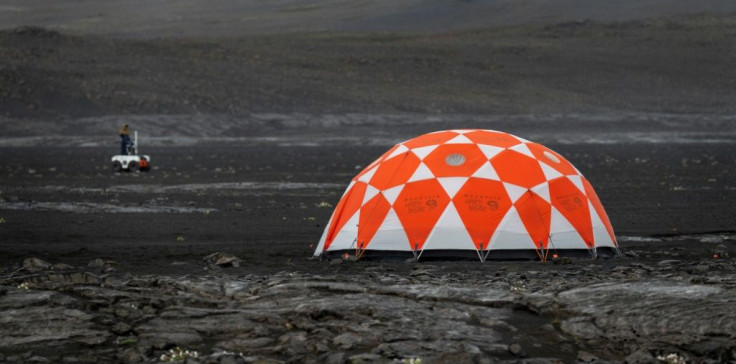NASA Mars Mission News: Humans Should Live On Mars' Moon

Humans have big plans of setting up a colony on Planet Mars, which is why space agencies from all over the world are doing extensive research on how this can be possible in the future.
Mars missions have already given us a glimpse of the environmental conditions on the Red Planet and the incessant search for water (a major component for survival) is underway. Back on Earth, scientists are perfecting building materials that can be used for human settlement, such as space suits and even the cement to be used for Mars structures.
Other nations like China and Israel, on the other hand, are also assimilating living conditions on Mars, with “space camps” that basically mimic the living conditions of the Red Planet.
Now a new theory reveals that the best living conditions to start a human colony can be found not on Mars itself, but on its smaller moon Deimos. According to a report, the Martian moon can actually provide a comfort zone for human settlers.
“The Mars-facing side of Deimos is probably the most valuable real estate in the solar system,” former NASA flight surgeon Jim Logan, co-founder of the Space Enterprise Institute, said in Seattle’s Museum of Flight.
Logan made the statement during a space settlement conference organized by the Space Studies Institute that highlighted the late Princeton physicist Gerard O’Neill’s vision to explore the solar system. O’Neill can be remembered for his bold concept of free-flying space colonies, which was published in the 1977 book entitled “The High Frontier.” It was this concept which then inspired Princeton alumna Jeff Bezos to aim for his own space journey at the height of the businessman’s Amazon success.
Logan, on the other hand, said that O’Neill’s habitat theory is not likely to work in current circumstances. Citing up-to-date measurements of the radiation flux in deep space, he said that it would “take three times as much bulk as O’Neill called for to provide Earth-level protection to the inhabitants of the habitat described.” In layman’s terms, the habitats would need 8.5 million tons of shielding for humans to survive.
The biggest threat, of course, is radiation — something that scientists need to contend with in both plans to start a human colony on the moon and Planet Mars. The theory was backed by John Charles, former chief scientist for NASA’s Human Research Program and is now scientist in residence at Space Center Houston.
“My colleague, Jim Logan, made a comment that I quote … and that is, ‘We shouldn’t call it space, we should call it radiation,’ because that’s what there is out there,” Charles said.
Radiation could mean serious health threats to humans in space, including the risk of developing cancer. “It’s like going from being a non-smoker to a smoker,” he said. The risk would increase if humans stay far from the protection of the Earth’s magnetic field.
This is why Logan suggested that the best bet would be for humans to start a colony underground and the Martian moon Deimos could offer a plausible area to do just this. Deimos is believed to be porous enough for easier digging and Logan even hinted that this is something that SpaceX CEO Elo Musk’s Boring Company can accomplish.
Logan said that excavating miles long tunnels under Deimos could offer much-needed protection against radiation. “They’ll have to live like ants, earthworms or moles,” Logan said.
© Copyright IBTimes 2025. All rights reserved.





















